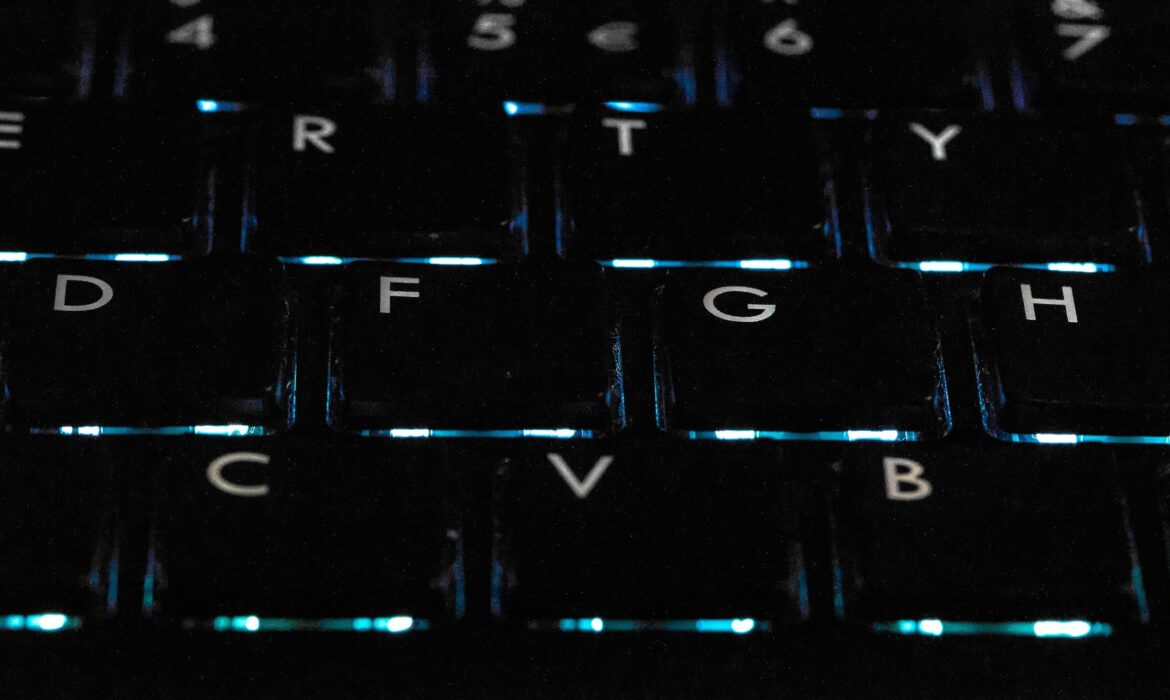The world has long been dominated by the QWERTY keyboard layout—a system designed over 150 years ago, originally meant to reduce mechanical jams in typewriters. Despite its historical significance, QWERTY is far from intuitive, especially for children, non-native English speakers, seniors, and individuals with cognitive or motor challenges. Enter ABC Keyboard, a company that reimagines typing by offering a keyboard layout that follows the simple and familiar order of the alphabet.
To understand the product in full, you can visit ABC Keyboard’s official website: Explore the alphabetically arranged EZ Keyboard
What Is ABC Keyboard?
At the core of ABC Keyboard is a singular idea: make typing easier by eliminating the confusion of QWERTY. Their product—the EZ Keyboard—rearranges the keys into an alphabetical layout (A to Z), allowing users to locate letters in the same order they learned them as children. It’s a seemingly small shift, but one that has powerful implications for accessibility, learning, and digital confidence.
This design is especially helpful for beginners, elderly users, people with dyslexia, and anyone who feels overwhelmed by traditional typing layouts. The simplicity of finding letters in alphabetical order drastically lowers the barrier to entry for anyone intimidated by computers or typing.
Ideal for First-Time Users and Educators
ABC Keyboard is not just a gadget—it’s a learning tool. For parents teaching their children how to type, or teachers introducing computers in early education settings, the alphabetical layout makes a lot of sense. Young learners are already familiar with the alphabet; asking them to jump straight into QWERTY introduces unnecessary confusion.
Moreover, ESL (English as a Second Language) learners often struggle with QWERTY layouts due to different keyboard designs in their native countries. The alphabetical approach is universally understandable, giving these learners a smoother entry into using computers in English-speaking contexts.
Accessibility-Focused Design
Another significant strength of the ABC Keyboard is its impact on accessibility. Individuals with physical disabilities or cognitive impairments may find traditional keyboards difficult to navigate. Searching for keys out of order can slow typing speed and increase frustration. By restoring order—literally—ABC Keyboard offers an intuitive solution.
The company has even highlighted user testimonials where people with limited mobility or conditions like dyslexia report improved typing accuracy and comfort. The EZ Keyboard helps reduce the cognitive effort involved in remembering QWERTY’s arbitrary arrangement, giving users more mental energy to focus on content rather than mechanics.
Product Features
The EZ Keyboard is designed with ease of use in mind, but it doesn’t compromise on functionality. Some key features include:
Alphabetical A–Z key layout
Wireless USB connectivity for plug-and-play convenience
Full-size keys and numeric keypad, making it suitable for both casual users and professionals
Sleek and modern design to fit into any home or office environment
This isn’t a toy-like beginner’s product—it’s a fully functional keyboard aimed at real-world use. Whether you’re using it at home, in a classroom, or in a professional setting, the keyboard delivers both comfort and usability.
Educational and Practical Benefits
The benefits of the ABC Keyboard extend beyond ease of typing. For educators, the product can become a bridge between analog and digital learning. It reduces the intimidation factor of technology for young children and makes teaching computer literacy a more manageable process.
In older populations, particularly seniors who may be learning how to use a computer for the first time, the alphabetical layout restores familiarity and confidence. Rather than feeling defeated by the steep learning curve of QWERTY, these users are empowered to learn at their own pace.
Design Philosophy
The philosophy behind ABC Keyboard is rooted in accessibility, simplicity, and empowerment. Unlike other keyboard alternatives that require downloading custom software or retraining muscle memory for gaming or coding, the EZ Keyboard is easy to adopt and functions just like a regular keyboard—only more intuitive.
This design-first approach ensures users don’t have to choose between performance and accessibility. You simply plug in the USB receiver, start typing, and enjoy the clarity of an alphabetic layout.
What Could Be Improved
While the ABC Keyboard offers a refreshing approach, there are areas that could be enhanced for an even greater impact:
More visibility in retail: Currently, availability is mostly limited to the website. Wider distribution in education-focused or tech accessibility outlets could broaden its reach.
Additional layout options: Offering customizable keys or dual-labeled QWERTY and ABC versions could attract users transitioning from one layout to another.
Software integration: Including optional learning tools, typing games, or practice programs would enhance its value for beginners.
Still, none of these are dealbreakers—just ideas for helping the product reach even more people.
Market Relevance and Future Potential
In a world increasingly reliant on technology, digital literacy is no longer optional. Typing is a core skill, and the tools we use to teach it matter. While QWERTY may remain dominant for the foreseeable future, it’s clear that alternatives like ABC Keyboard have a vital role to play in making technology more inclusive.
The EZ Keyboard is more than a product; it’s a symbol of how thoughtful design can open doors for people who might otherwise be left behind by traditional systems.
To get a closer look at what the product offers, you can check out ABC Keyboard’s main site: Visit ABC Keyboard
Final Verdict
ABC Keyboard offers a smart, user-friendly solution that rethinks an everyday device for real-world accessibility. Whether you’re teaching a child to type, assisting someone with learning difficulties, or simply looking for an intuitive alternative to QWERTY, the EZ Keyboard delivers. It fills a long-overlooked gap in the typing world with elegance and practicality.
For educators, parents, learners, and accessibility advocates alike, this is a tool worth serious consideration.


